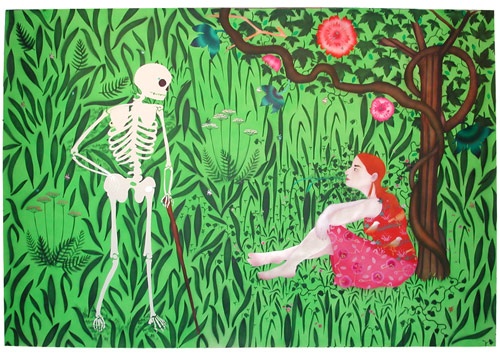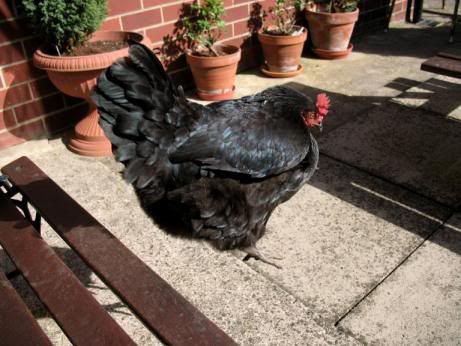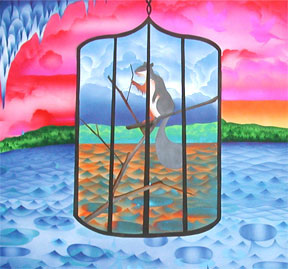
It's up on the site, but it still looks a little weird online. Color issues drive me crazy on computers- my camera alters my color as soon as I take the picture, then my computer, which is a mac calibrated to look like a PC, messes it up further, then I optimize it for the web, so it looks even worse. Makes me crazy- being an artist is all about picky image control, and putting anything on the web is all about surrendering to everyone else's weird monitor colors. But Thom has been reading a book about wine, so we've been talking about the problem of describing sensory information accurately all day long. Which makes me inclined to be philosophical about it. It could be that putting artwork on the web is just a physical manifestation of an eternal problem. I can extend the metaphor. Maybe just like everyone's monitors are fucked up, everyone's eyes are different. Seeing my work messed up on some uncalibrated monitor over the internet could be taken as a metaphor for the experience of seeing through the eyes of someone who really doesn't get it, or who is one of those people (you can tell I hate these people- forgive me) who sees a lot of bright colors and claims that it hurts their eyes.
Of course, eyes work better than monitors, but I'm not sure brains do. My own does not. I can't tell if a painting is good or bad until I've forgotten it. I learned long ago that the best experience of making a painting can result in the worst painting ever, and vice versa. Making this painting has been, sadly, maddening. My studio is about 95 degrees, my stencils have been falling off and sticking to my shoes, and I'm suffering from what a friend of mine who had been through more therapy than should be humanly possible called "resistance". When she was stalling, not wanting to do some unpleasant task, she called it resistance, which I loved. I have resistance to lots of things. I particularly had resistance to working in my hot sticky studio wearing a sweat filled respirator. It's been a hideous process. So until today I pretty much hated the painting. But that I'm done and I've swept up all the stencils I kind of like it, and I'm excited about what I'm going to do next.
I can't talk about that yet- I think talking about what one is doing next is a form of action that can easily replace actual work- but I did find another great podcast to talk about. Today I listened to Dave Hickey interview Rauchenberg. Which, you know, sounds good. And it is, but it's also REALLY DISTURBING. I highly recommend it. Both of these august cultural treasures have the most demonic baboon laughs I've ever heard, and they giggle nonsensically through the whole interview. It's insane. It's on this page- scroll down for a guaranteed art star freakout experience.




















